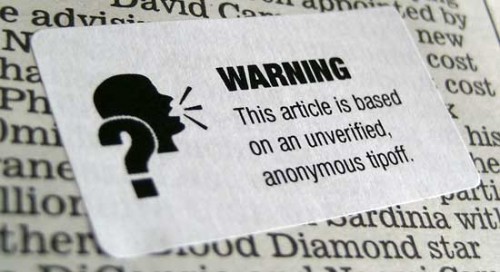That's the summary behind "Regret the Error," a site that tracks journalism mistakes (which, coincidentally, is headed over to Poynter). And when mistakes do happen, the evolving pace of news and reporting on web is changing the way journalists correct their reports.
For instance, if you're liveblogging or livetweeting breaking news and you receive the wrong information from public officials, do you need to write a formal correction? Do you go back and delete the information? How do you make sure those readers aren't still under the impression that the earlier information is the most relevant.
These issues came up as we talked last week about the mistake a television station made in falsely reporting the death of Billy Graham, who is 93 and was in the hospital for pneumonia. In a similar scenario, Ann Rodgers of the Post-Gazette told us of a story from her neck of the woods.
This reminds me of a bizarre broadcast in Pittsburgh concerning the death of James Earl Ray, who murdered Martin Luther King. The radio announcer for the Pittsburgh Pirates was on the air during a game and apparently saw the bulletin come in. He interrupted his play-by-play to commemorate the deceased, noting the culturally significant roles he had played from The Great White Hope on Broadway to the voice of Darth Vader in Star Wars. Co-workers were able to interrupt and stop him before he went any further in eulogizing the very-much-alive African-American actor, James Earl Jones. I believe the on-air correction was immediate.
Yikes. You can imagine how this could happen for broadcasters who are announcing news live as it comes in. But as traditionally "print" reporters are writing on the fly for the web, you could conceivably see these kinds of mistakes on Twitter, blogs, etc.
To the station's credit, it issued on-air corrections, as well as corrections on its website and its Facebook page. You can imagine that as people flip through channels quickly or see updates pass by on their Facebook feeds that they don't necessarily catch all the updated information, but the station appeared to do what it could to correct its mistake. Similarly, newspapers can't be sure the reader will find the updated correction in the designated area the next day.
Thankfully, web reports have simplified things to some extent where reporters are able to clearly mark that they have corrected or updated a post. Still, some aren't as eager to go back and make it clear to the reader that a post has changed or a tweet is no longer correct.
I have often wondered whether media outlets will be able to form a more Wikipedia-like reports with fact-checked substance. Let's say you're coming across an evolving story, like the Virginia Tech shooting last week. You see the initial news on your phone at, say, 2 p.m. and then later that night, you wonder what ended up happening.
If you're following the story from your local news source, is it obvious where you can find the latest update that tells you the story from beginning to end, or will you have to stumble across AP reports, blog posts and tweets throughout the day? How do you know if earlier information was assumed and then corrected? These are the kinds of questions reporters are still wrestling with as tech takes journalism to different levels. For more, listen to this week's podcast.


